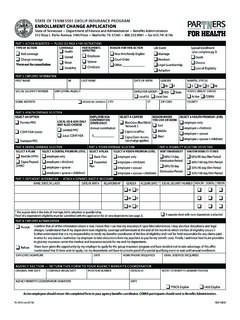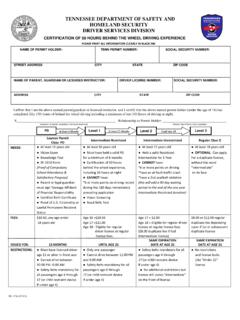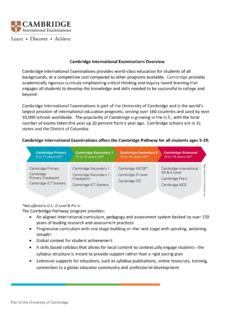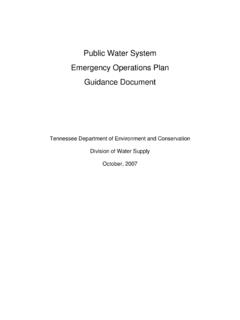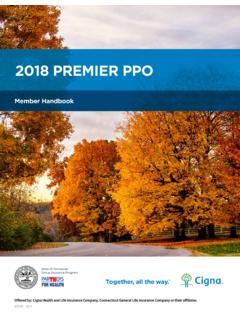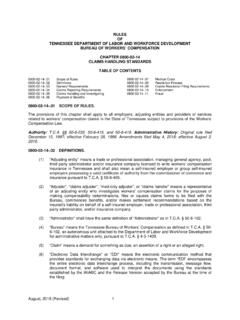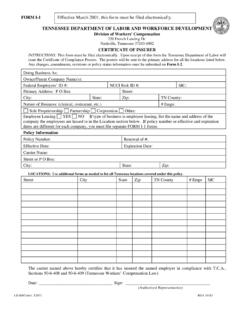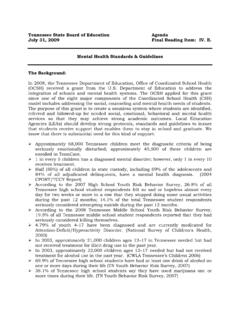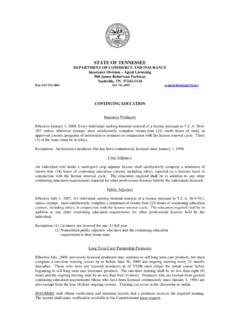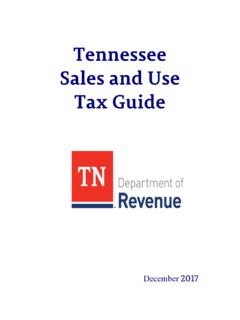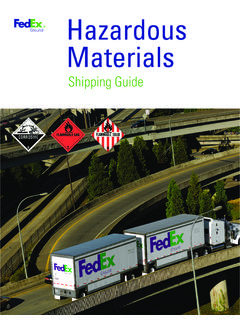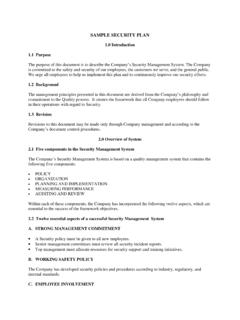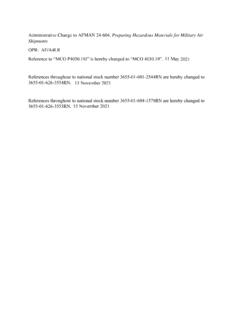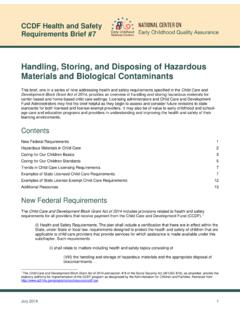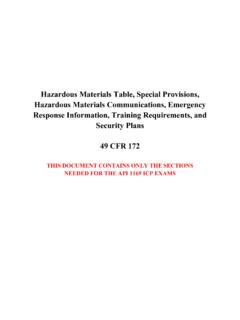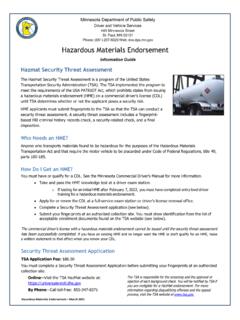Transcription of Section 1 INTRODUCTION - Tennessee
1 Section 1 - INTRODUCTION Page 1-1 Section 1 INTRODUCTION This Section Covers Commercial Driver License Tests Driver Disqualifications Other Safety Rules There is a federal requirement that each state have minimum standards for the licensing of commercial drivers. This manual provides driver license testing information for drivers who wish to have a commercial driver license (CDL). This manual does NOT provide information on all the federal and state requirements needed before you can drive a commercial motor vehicle (CMV). Every effort has been made to provide, in this publication, the most current and accurate information as of November 1, 2010. Misprints or outdated information that may appear within these pages will not override or supersede changes that have occurred in the law, promulgated rules and regulations or policy that has been initiated since the printing date.
2 This manual does not give a complete statement of all Tennessee traffic laws and may not reflect the most recent changes in state and federal regulations. For the most current information you should re vie w Tennessee Code Annotated, Title 55 and Federal Motor Carrier Safety Regulations. What is a Commercial Driver License? Operators of larger and more complex vehicles will need to apply for a Commercial Driver License (CDL). These licenses include Class A, B, or C depending upon the Gross Vehicle Weight Rating (GVWR), Gross Combination Weight Rating (GCWR), and/or what is being transported. The Class A with the 57 restriction code (A/57) is for drivers that drive combination vehicles that would qualify under the Class A category, however the power unit can carry a load in itself and the trailer has a GVWR of 10,001 pounds or more.
3 Some examples are a dump truck, or delivery truck pulling a trailer with a GVWR of at least 10,001 pounds. Another example is a truck towing a mobile home. Any driver wishing to obtain a Class A with the 57 restriction code will need to take the skills test in a truck and trailer that has a Gross Combination Weight Rating (GCWR) of 26,001 pounds or more, provided that the Gross Vehicle Weight Rating (GVWR) of the trailer is at least 10,001 pounds. Prior to any CDL skills tests, the vision test and all applicable CDL knowledge tests must be passed. You must have a CDL to operate: Any single vehicle with a gross vehicle weight rating (GVWR) of 26,001 pounds or more. Any combination vehicle with a gross combination weight rating of 26,001 or more pounds, if the trailer(s) has a GVWR of 10,001 or more pounds.
4 Any vehicle designed to transport more than fifteen (15) passengers in addition to the driver, or if the vehicle is used as a school bus, regardless of the weight of the vehicle. Any size vehicle which requires hazardous material placards, or is carrying material listed as a select agent or toxin in 42 CFR part 73. Federal regulations through the Department of Homeland security require a background check and fingerprinting for the hazardous Materials endorsement. Rules for securing the transportation of hazardous materials (including explosives) are provided by the Transportation security Administration (TSA) and the U. S. Department of Transportation. These rules require background checks for commercial drivers and the collection of those drivers fingerprints.
5 Applicants are required to have fingerprints taken by a vendor contracted by the Tennessee Bureau of Investigation, submit to a criminal background check completed by TBI and FBI, and submit to a threat assessment conducted by the TSA. TSA then notifies the State as to whether or not the applicant is eligible to receive a hazardous Materials Endorsement (HME): Adding HME- applicants wanting to add the hazardous materials endorsement (HME) on their CDL are required to first submit to a vision screening, pass the hazardous materials knowledge test, and then apply through the TSA for a criminal background check, and complete the fingerprint requirement through a vendor contracted by the TBI.
6 2011 Tennessee Commercial Driver s License Manual2011 Tennessee Commercial Driver s License Manual Section 1 - INTRODUCTION Page 1-2 Transfers applicants transferring a CDL with hazardous materials endorsement (HME) from another state are required to follow the TSA threat assessment procedure and to submit to a vision and knowledge test. If an applicant transferring a CDL with the hazardous materials endorsement was cleared by the TSA 6 months or less prior to their request to transfer to Tennessee , a TSA threat assessment would not be required. For more information on a hazardous material endorsement visit the Tennessee Department of Safety s webpage : To get a CDL, you must pass a general knowledge test and skills test consisting of a pre-trip inspection, basic control maneuvers, and a road test.
7 This manual will help you pass the tests. This manual is not a substitute for a truck driver training class or program. Formal training is the most reliable way to learn the many special skills required for safely driving a large commercial vehicle and becoming a professional driver in the trucking industry. Figure below helps you determine if you need a CDL. Do You Need a CDL? No Yes Yes No Yes Yes No Yes No Yes No NOTE: A bus may be Class A, B, or C depending on whether the GVWR is over 26,001 pounds or is a combination vehicle.
8 Figure Does the vehicle or combination of vehicles have a manufacturer s weight rating (GVWR) over 26,000 pounds? Is the vehicle a combination vehicle towing a unit over 10,000 pounds GVWR? You need a Class A CDL. Does the single vehicle have a GVWR over 26,000 pounds? You need a Class B the vehicle designed to carry 16 or more people (including the driver)? You need a Class C the vehicle require hazardous material placards or transport a select agent or toxin? You need a Class C DO NOT need a CDL.
